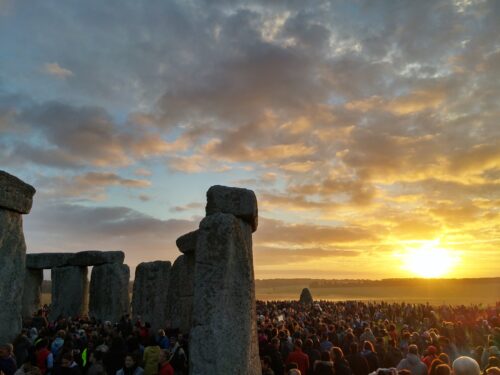#FunFactFriday – Summer Solstice
Summer solstice is right around the corner, signifying the beginning of summer (although this 100 degree heat is telling me otherwise). Personally, I don’t think that this holiday gets enough attention. In order for us to celebrate the June solstice the way it should be, we’ll need to start by understanding it a bit better. I’m tellin’ ya, it’s quite an interesting holiday!
- In the northern hemisphere, the summer solstice, otherwise known as the longest day of the year, takes place between June 20 and 22. This year, it’s on Wednesday, June 21.
- The world solstice comes from the Latin words sol (sun) and stare or sistere (to stand or stop).
- The summer solstice is deeply rooted in ancient pagan tradition—its celebration dates back to pre-Christian tradition.
- Many bygone civilizations celebrated the summer solstice including the ancient Greeks, the ancient Romans, the ancient Chinese, the Vikings, Native Americans, the Mayans and Aztecs and the Celtic high priests, also known as the Druids.
- In fact, the ancient Greeks turned its social code on its head during the summer solstice. Slaves were allowed to participate in the merriment as equals and some were even served by their masters.
- According to European tradition, the solstice, which was called Litha, was a day unlike any other. If you were lucky, you might be able to catch a glimpse of the faeries, who only revealed themselves to the common folk on this day. No wonder Shakespeare set his famous comedy during the magic of a midsummer’s evening.
- In Christianity, the summer solstice marks the festival of St. John the Baptist.
- Although it’s the longest day of the year, there are earlier sunrises prior to the summer solstice and later sunsets afterwards.
- During the June solstice, all locations inside of the Arctic Circle experiences a continuous period of daylight for 24 hours!
- Today, the summer solstice is celebrated in a variety of ways across the globe—Solstice in Times Square, Solstice Fires in Austria, Midsummer in Sweden and Astrofest in Croatia, to name a few.
- However, one of the most renowned celebrations takes place at Stonehenge, where people have gathered to worship the June solstice for thousands of years. The giant stones are positioned to align with the sunrise of the two annual solstices, causing thousands to flock to the site in order to witness the spectacle.
- If you’re unable to attend one of the many merrymaking festivities this year, use the day to reflect on your own personal fulfillment, whether that be paying homage to the sun by spending time outside or having a bonfire in your back yard.
Although the summer solstice is steeped in a history of grandiose celebrations, at its foundation, it is a time to reflect, relax and heal—a time for renewal, so to speak. So this year, how do you plan on rejoicing in the summer solstice?


